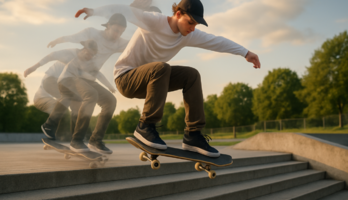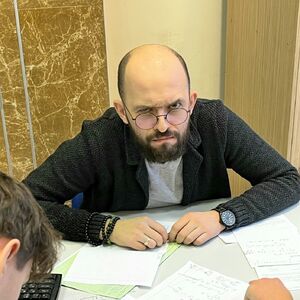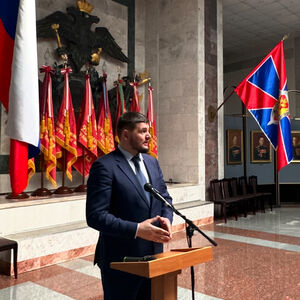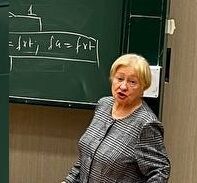42792 (662256), страница 3
Текст из файла (страница 3)
1. Play with many different but ordinary objects. Children stretch their imaginations when they play with ordinary objects. Many of these have interesting geometric properties. For example, some cylindrical objects, such as paper towel rolls and toilet paper rolls, can be looked through, rolled, and used to represent objects such as towers in a castle. All these activities develop the foundation of understanding three-dimensional shapes.
2. Play with the same objects in different ways. Creativity and thinking are enhanced if children play with the same object in different ways. When the box is a container, then a house, then stairs, then cut apart into a track for a car, children see the relationships between shapes, real-world objects, and the functions they serve.
3. Play with the same toys again and again. Some materials are so beneficial that all children should play with them again and again throughout their early years. Blocks for all ages, Duplos, and Legos, at the right age, can encourage children to build structures, learn about shapes and combine them, compare sizes, and count. They also learn to build mental images, plan, reason, and connect ideas. Sand and water play are invaluable for learning the foundations of measurement concepts. Creating patterns and designs with stringing beads, blocks, and construction paper develop geometric and patterning ideas. Puzzles develop spatial thinking and shape composition.
4. Everyday objects can be fun, as is playing with constructive toys again and again. However, buying too many different types of commercial toys can decrease children's mathematical thinking and creativity. Less can be more! Rotating toys keeps children interested.
5. Count your playful actions. Many games and playful activities just call out for counting. How many times can you bounce a balloon in the air before it touches the ground? How many times can you skip rope?
6. Play games. Card games, computer games, board games, and others all help children learn mathematics. They count dots on cards and spaces to move. Counting helps them connect one representation of numbers to another. They learn to instantly recognize patterns of numbers, such as the dot patterns on dice or dominoes. Some games involve using a timer. Concentration and Bingo involve matching. Checkers and Candy Land involve spaces and locations.
7. Play active games. Beanbag tossing, hopscotch, bowling, and similar games involve moving and distances. Most of the games involve numbers and counting for score keeping, too. Games such as "Mother May I?" involve categories of movement. "Follow the Leader" can be played using math concepts, such as announcing you will take five large steps backward, then two small steps to the side.
8. Discuss math playfully. Math will emerge when you help your children see the math in their play. Talk about numbers, shapes, symmetry, distances, sorting, and so forth. Do so in a playful way, commenting on what you see in the children's constructive play.
9. Provide ample time, materials, and teacher support for children to engage in play, a context in which they explore and manipulate mathematical ideas with keen interest [5, pp. 10-11].
Preschool and kindergarten children can learn much from playing with blocks (Jensen and О'Neil, 1982). They can
-
compare and seriate shapes. Start with single shapes and have children compare two pieces according to size. Later, more pieces can be added until several items of one shape can be seriated;
-
classify and name shapes. Provide two shapes at first then, after much practice, add a third and fourth. Make large loops of yarn on the floor or provide boxes to place the blocks in. A good game to play for naming is Pass the Block. Children sit in a circle and, as music plays, they pass blocks in one direction. When the music stops, each child names the shape he or she holds;
-
trace and feel shapes. Children trace around a block with pencil, then color it in if desired. With a little practice, they can superimpose different shapes on one paper, coloring in some of the sections. Blocks can also be used as items in a "mystery bag." Two or three familiar shapes are placed in a bag and children take turns reaching in, feeling a block, and identifying its shape.
Plane figures can be explored through active interaction. Colored tape is laid on the floor in geometric shapes large enough for children to walk on. Ask the children to jump, walk, crawl, and so on across specific shapes. They might count the number of children who can fit in one triangle or the number of steps it takes to walk the perimeter of a square.
Kindergarten and primary children continue to learn best from working with manipulatives and may find the illustrations in math textbooks confusing. Some materials that are appropriate are tiles, pattern blocks, attribute blocks, geoblocks, geometric solids, colored cubes, and tangrams. Computer games in which geometric shapes appear from different angles help children overcome their misunderstandings of book illustrations, which may show a shape from only one or two viewpoints. Some appropriate activities are building structures with various types of blocks to enhance spatial visualization. Folding and cutting activities such as origami or snowflake making, exploring the indoor and outdoor environments to identify shapes and angles made by people and nature, reading maps, making graphs, playing Tic-Tac-Toe, Battleship, and other games that use grid systems [6, pp. 458- 459].
All day long there are opportunities for children to increase their awareness of mathematics in the world around them. Mathematical phenomena may not always be as obvious as those of language, however. Thus, the teacher must take extra care to include mathematical learning whenever natural learning situations arise. Often this means recognizing opportunities to incorporate mathematics into other areas of the curriculum.
CONCLUSION
Mathematical learning for young children is much more than the traditional counting and arithmetic skills; it includes a variety of mathematical concepts (classification, ordering, counting, addition and subtraction, measuring, geometry).
Children may begin some simple work with geometry in primary school. Main goal of beginning geometry is to teach children to recognize the most simple shapes—the square, the circle, the triangle, and the rectangle. Teaching such basic terms simplifies classroom explanations and lays the foundation for future work with geometry.
By age six, children often have stable yet limiting ideas about shapes. It’s possible to broaden child's understanding by pointing out a variety of examples — squares that are many sizes and triangles that are "long," "skinny," "fat," and turned in many directions.
Thus teachers must keep in mind that children learn geometry most effectively through active engagement with toys, blocks, puzzles, manipulatives, drawings, computers and teachers!
It’s possible to develop deeper thinking about shapes not just through hands-on activities and discussions, picture books but through playing. In primary school playing is used as the main method of teaching.
Huge experience of using games and playing exercises during the children’s studying of mathematics (and geometry) is accumulated in practice of working of preschool organizations.
REFERENCES
-
Douglas Clements. Ready for Geometry! From an early age, children make sense of the shapes they see in the world around them // International Journal of Mathematical Education. Science and Technology. – 2006. - № 2, pp. 5-6.
-
Ellen Booth Church. Exploring simple shapes sets the stage for creative thinking // International Journal of Mathematical Education. Science and Technology. – 2007. - № 11, pp. 12-13.
-
Ellen Booth Church. Boxes are the raw materials of creative thinking! // International Journal of Mathematical Education. Science and Technology. – 2006. - № 10, pp. 9-10
-
Ellen Booth Church. Color, Shape, and Size. Use snacks and mealtime to teach big ideas with taste and ease // International Journal of Mathematical Education. Science and Technology. – 2007. - № 8, pp. 2-5.
-
Julie Sarama, Douglas H. Clements. Some activities teachers can try to support math learning// International Journal of Mathematical Education. Science and Technology. – 2005. - № 1, pp. 10-11.
-
Suzanne Lowell Krogh. Educating Young Children. Infancy to Grade Three. New York.: McGraw-Hill, Inc., 1994. – 605 p.
-
The World Book of Math Power. Volume 1. Learning Math. – Chicago.: World Book, Inc., 1995. – 420 p.
8
















